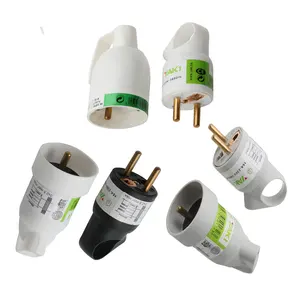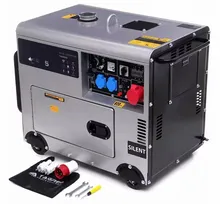Introduction
In the world of electronics, the humble electrical plug plays a pivotal role, acting as the bridge between devices and their power source. This article delves into the intricacies of female electrical plugs, their types, and their essential role in powering our devices. We will explore the safety measures, proper installation, troubleshooting, and maintenance of these plugs. Furthermore, we will look into the future trends and innovations that promise to reshape the landscape of female electrical plugs. This guide aims to empower you with knowledge about these crucial components, ensuring the safe and efficient operation of your devices.
Understanding Electrical Plugs: Basics and Types
Electrical plugs come in various types designated by letters (A, B, C, D, E, F, F/G, G, H, I, J, K, L, M, N). These types are used in different countries to ensure plug compatibility with the specific country sockets and their corresponding current and voltage ratings. They are used in a wide range of electrical and electronic devices, equipment, and appliances. Each plug type has passed all reliability tests required by every country’s safety standards and bears the country’s mandatory safety marks.
The Role of Female Electrical Plugs
Female electrical plugs play a crucial role in connecting devices to the power supply. They are designed with protruding pins that match the openings and contacts in a socket. Some plugs have built-in fuses for safety and may include a third pin for a safety connection to earth ground.
Identifying Female Electrical Plugs
Female electrical plugs, or wire terminals, are a crucial part of any electrical connection. They are distinguished by their recessed, or 'jack', design. The inner crimp terminal contact of the female connector is a jack, with various types and structures such as cylindrical, tuning fork type, cantilever beam type, folding type, box-shaped, and hyperboloid wire spring jack. These female terminals receive and accept the terminal wires of the male end, ensuring the safe and efficient flow of current from one device to another.
Safety Measures When Handling Female Electrical Plugs
Electrical failures or malfunctions can lead to serious consequences such as home fires. It's crucial to understand and implement safety measures when handling female electrical plugs. Here are five quick and effective ways to reduce your risk for electrical fire and electrical shock. Remember, these safety tips can help protect your home and your loved ones. However, in case of any mishap, knowing how to use a fire extinguisher is equally important.
Proper Installation of Female Electrical Plugs
To properly install a female electrical plug, first remove all power from the cord. Cut off the old plug and remove 2 inches of the outer insulation to reveal the wires. Strip ½ inch of insulation from each wire. Open the new plug and slide the wires through the cable clamp. Connect the wires to the corresponding colored screws inside the plug. Finally, secure the plug and tighten all screws. This process requires minimal time and tools, and can effectively extend the life of your extension cord.
Troubleshooting Common Issues with Female Electrical Plugs
Female electrical plugs can encounter several issues. Sometimes, the problem lies with the device, not the outlet. If the outlet isn't working, try plugging a different device into it. If it works, the issue is with the device. Another common issue is a tripped breaker, which can be reset from your home’s breaker panel. If the breaker keeps tripping, it could indicate a more serious problem with the wiring. GFCI outlets can also trip and stop working, requiring a reset. If the outlet still doesn't work, it's best to contact a professional electrician.
Maintenance and Care for Longevity
Maintaining female electrical plugs is crucial for their longevity and safety. Regular testing of these outlets can help identify any potential issues early on, reducing the risk of electrical fires. Old or damaged wiring should be replaced promptly, and it's advisable to use certified parts for replacements. Avoid DIY repairs for serious wiring issues; instead, consult a professional electrician. Don't overlook outlets in less-frequented areas like basements or attics. Regular maintenance can prevent serious electrical issues and ensure the longevity of your female electrical plugs.
The Future of Female Electrical Plugs: Innovations and Trends
The future of female electrical plugs is intertwined with the evolution of power and electric trends. Wireless power transfer, a technology still in its early stages, promises to revolutionize how we power our devices, potentially impacting the design and function of female electrical plugs. Moreover, the rise of smart grids and microgrids, which improve the efficiency and reliability of electricity supply, could also influence the development of female electrical plugs. Lastly, the Internet of Things (IoT), a network of connected devices, may further transform the role and capabilities of female electrical plugs in our increasingly interconnected world.
Conclusion
Female electrical plugs are integral to our daily lives, powering a myriad of devices and appliances. Understanding their types, safety measures, installation, and maintenance is crucial for their efficient and safe operation. As we look to the future, emerging technologies like wireless power transfer, smart grids, and the Internet of Things are set to revolutionize the role and design of female electrical plugs. By staying informed and adapting to these changes, we can ensure the longevity and safety of our devices, while also paving the way for a more interconnected and efficient world.













































 浙公网安备 33010002000092号
浙公网安备 33010002000092号 浙B2-20120091-4
浙B2-20120091-4